Flavours of an Indigenous Past
The hidden corner of North-West Argentina gives us hints of its history
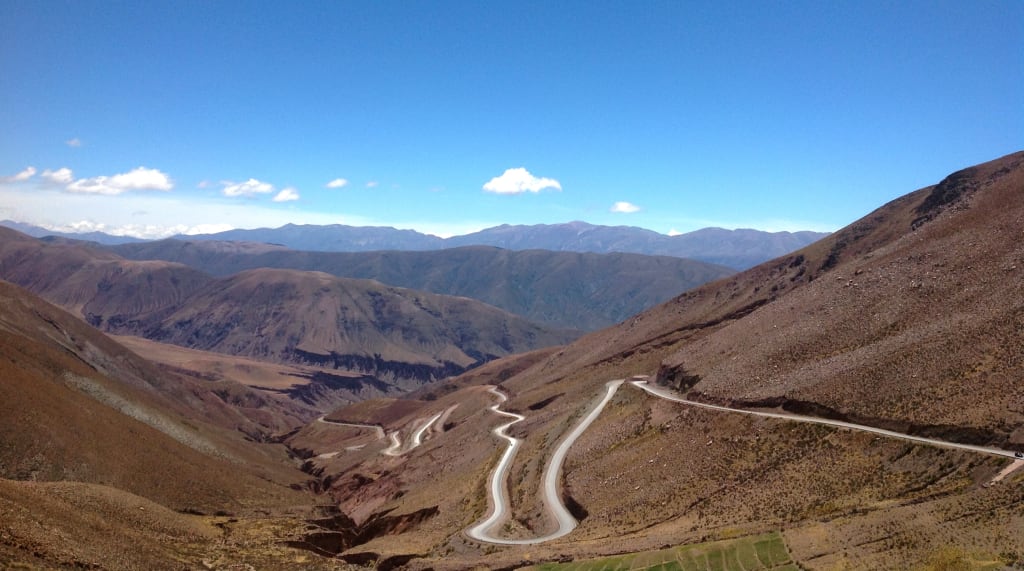
My wife Alejandra, like nearly every Argentinian, has European ancestry. She fits within the story the country shows the world of a European-facing country inside South America. The thing is, 30% of her DNA is indigenous.
The original people of this country are still around, their genes hidden away inside the current population.
She has no idea which part of Argentina her indigenous side comes from, there are no records. So we left the European styled city of Buenos Aires to travel to the quiet north-west of the country, on the Bolivian border, to get a flavour of her past.
North-west Argentina was less affected by the mass European immigrations of the 19th and 20th centuries and is still not on the major tourist trails. Some 70% of the region's population has Native Argentinian heritage.
The original natives of north-west Argentina were the Diaguitas and Calchaquíes. Many of the towns and the natural features here have names that remind us of the original tribes who once lived here – Iruya, Cachi and Valle Calchaquíes for example. These native peoples live on today within the mixed genes of modern-day Argentinians. Like Alejandra.
Salta City
We flew into Salta City from Buenos Aires. It's the part-stylish part-shabby colonial-style capital of Salta province. If you half close your eyes and shut out the traffic noise, you could almost be back in the days of Spanish colonisation.
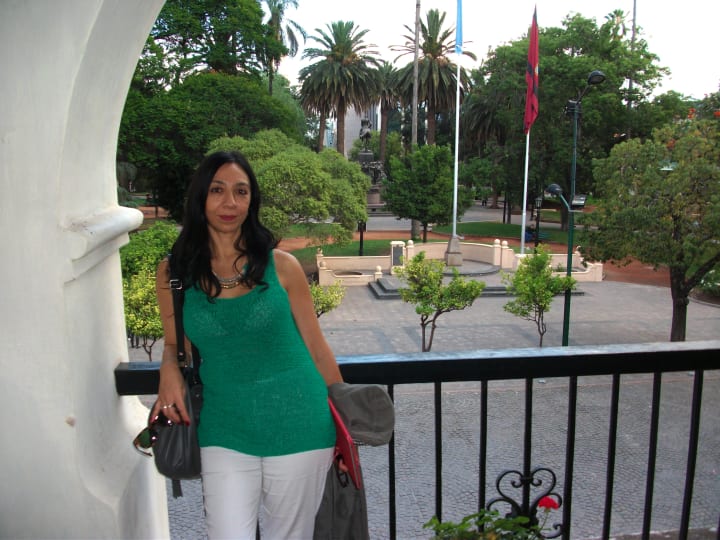
The 9 de Julio plaza in the city centre is surrounded by 18th and 19th-century buildings, the principal ones being the City Hall, the Cathedral de la Virgen del Milagro (the Virgin of the Miracle), the Museo de Arqueologia de Alta Montaña (the Museum of the High Mountain Archaeology) and the Cabildo Histórico.
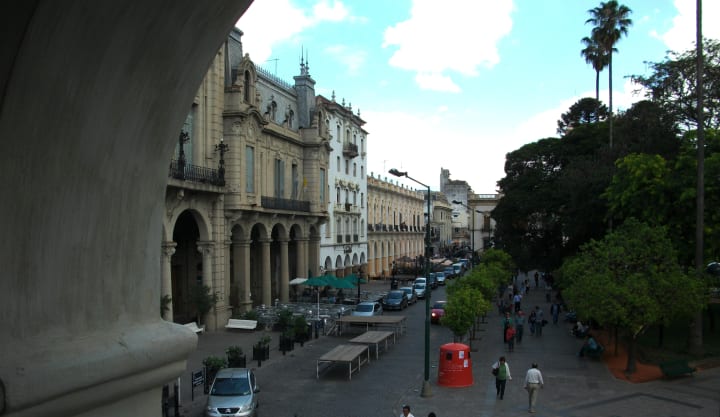
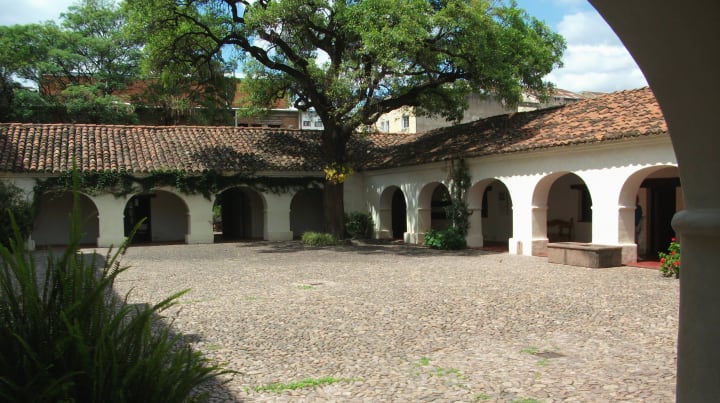
The ornate Iglesia San Francisco (Church of St Francis) is a few minutes walk from the main plaza.
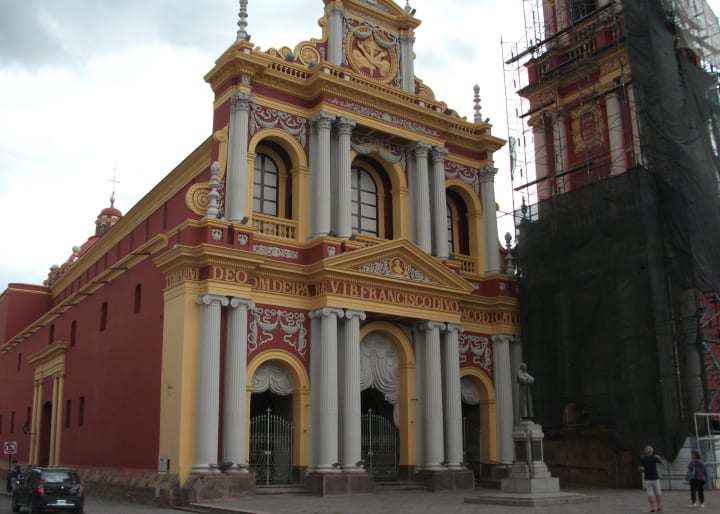
The North West of Argentina was the southernmost extent of the Inca empire and the Museo de Arqueología de Alta Montaña in Salta displays the Children of Llullaillaco mummies – three well-preserved 500-year-old mummies of Inca children. These mummies were discovered in Salta province in 1999.
You're not allowed to take photos of the mummies so check out the National Geographic site for photos and details.
After three or four days getting the flavour of Salta, the coach station was our next point of call. We were off on part two of the getting a flavour of Alejandra's roots expedition.
Cafayate
The indigenous peoples of Argentina didn't have wine, they drank Chicha which is a corn beer. Vines were brought to South America by the conquistadors in the 16th century.
Today, Salta province is an important wine-growing region and Cafayate is the centre of the province's wine production. Recognising that Alejandra has colonial Spanish ancestry too, we decided part three of the trip was to be getting a flavour of the local wine.

Despite being a major wine production zone, or maybe because of it, Cafayate is a sleepy provincial town with a main high street and a market. Restaurants, cafés and shops are dotted around the town square.
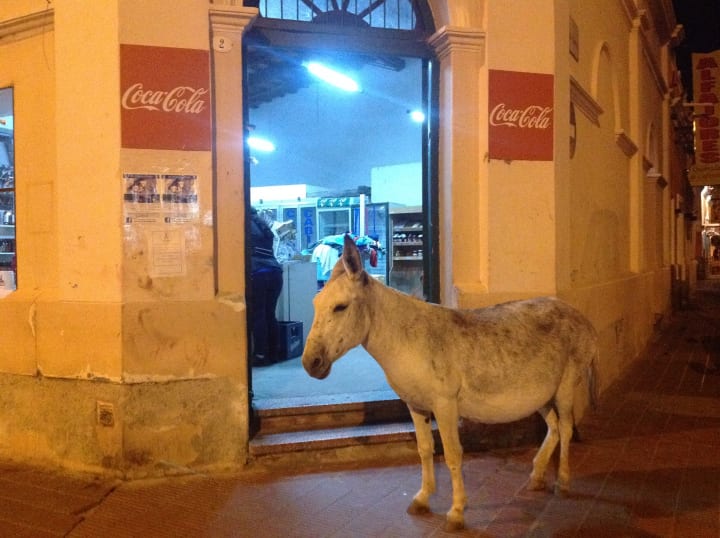
The signature wine of Salta is Torrentés, a fruity white, but they also produce rich high-altitude Malbecs very different from those of the country's principal wine region, Mendoza.
The Quebrada de las Conchas
The next day, after Ibuprofen and a couple of pints of water due to our exuberant wine tasting, we went to get a flavour of the countryside. We joined a minibus tour from the bus station to spend a day hiking and touring the Quebrada de las Conchas - the Ravine of the Shells.
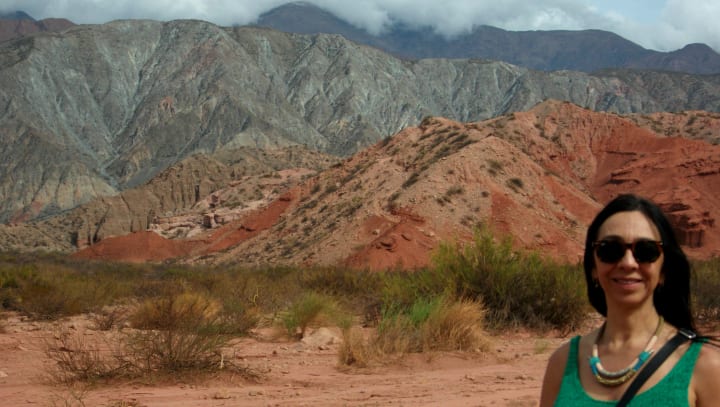
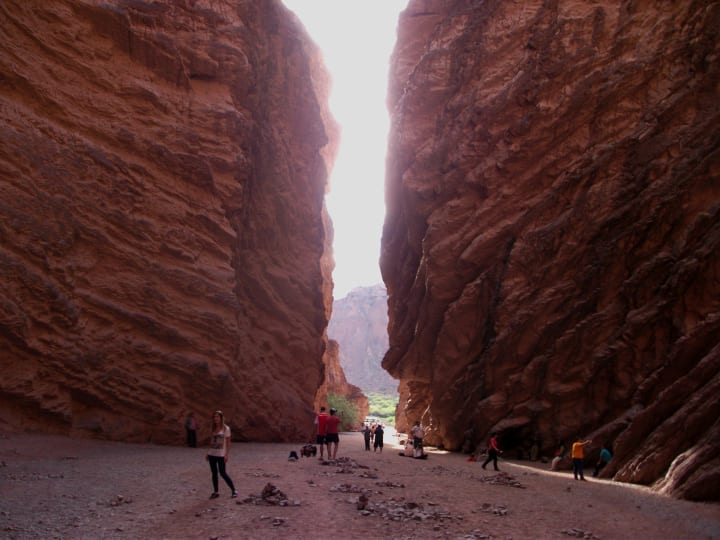
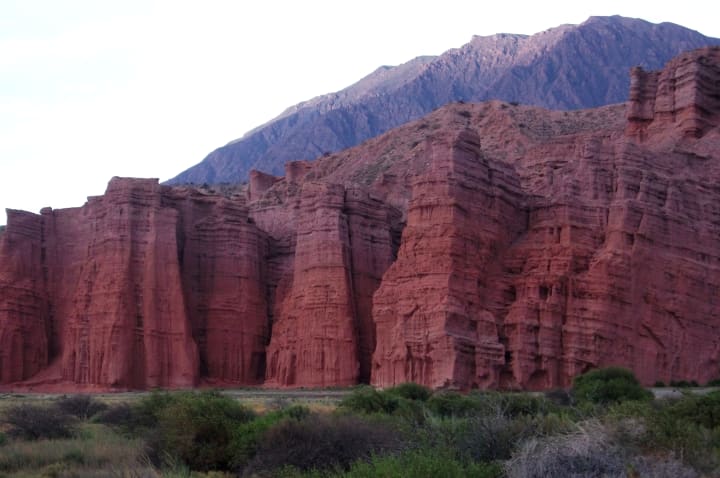
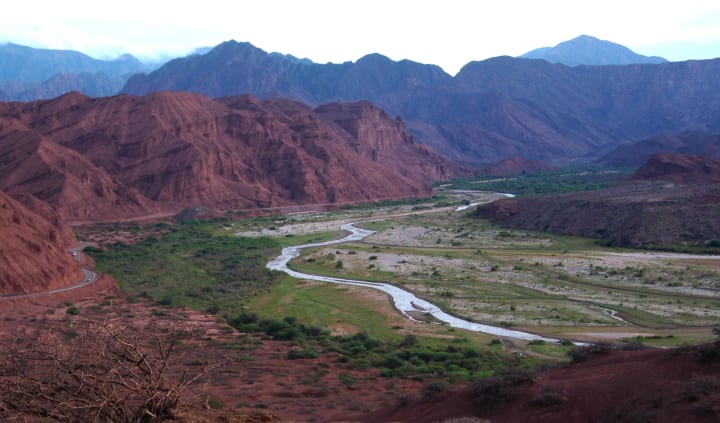
Cachi
Public transport is pretty good in Salta so we travelled from Cafayate to Cachi by bus, nearly a hundred miles.
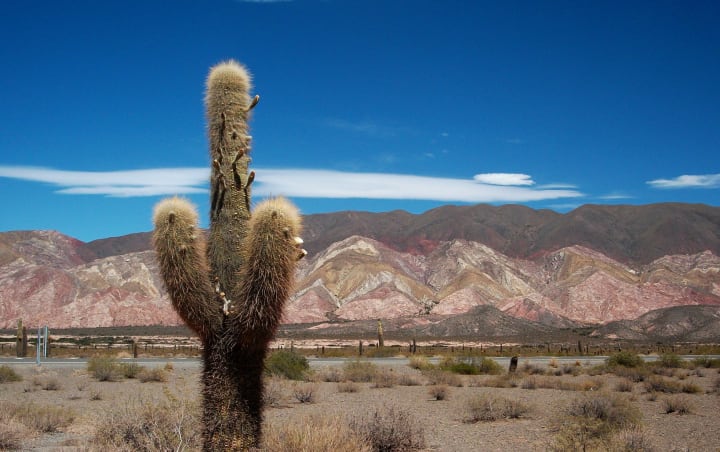
Cachi is a small town in the Calchaquíes Valley. It's sleepier, fresher and smaller than Cafayate, with adobe houses, white colonial buildings and a 16th-century Spanish colonial church. And the world's highest commercial vineyard, over 10,000 feet above sea level.
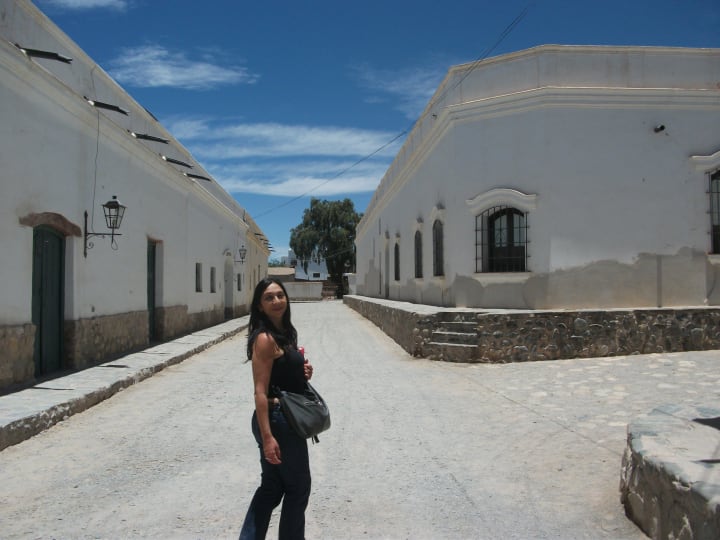
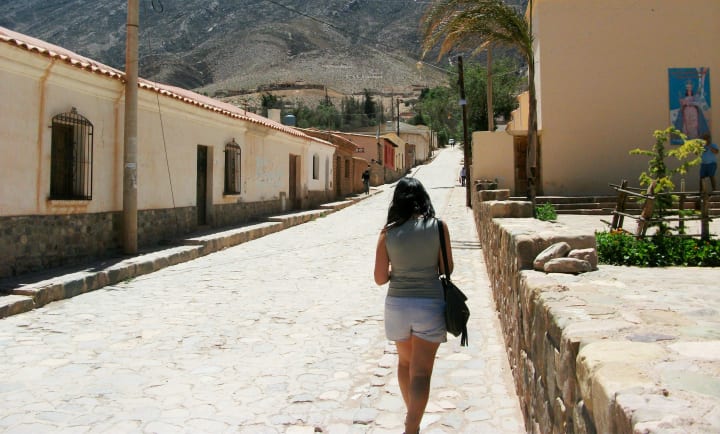
There is a reconstructed Inca-period village on the edge of town.
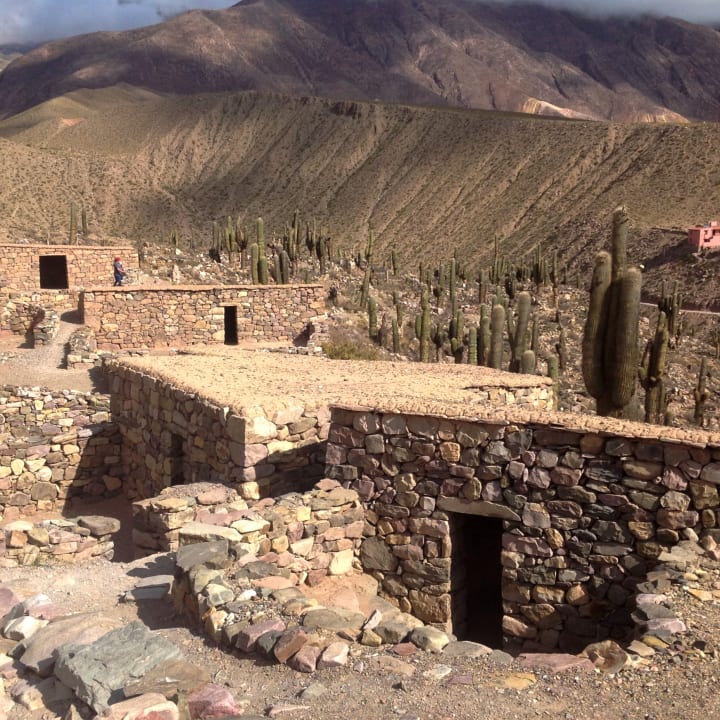
The centre of the Inca village has a small reconstructed temple. It's not quite Machu Pichu, but it's nice enough.
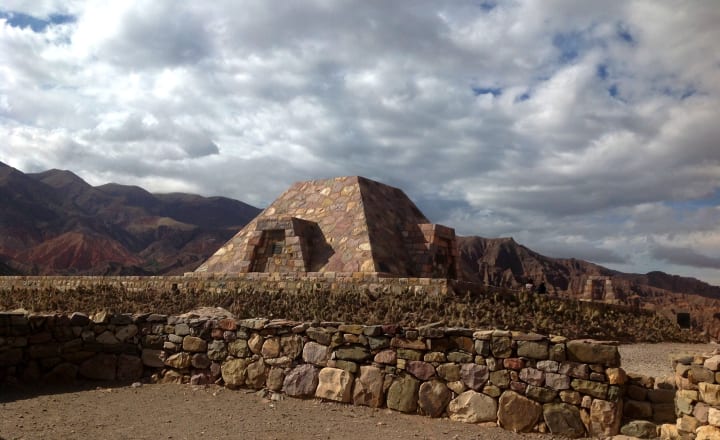
Salinas Grandes (Great Saltworks)
We arrived at the chilled rarified air of the Salinas Grandes after a hairy ride through narrow winding roads up into the mountains. The Salinas Grandes are over 11,000 feet above sea level.
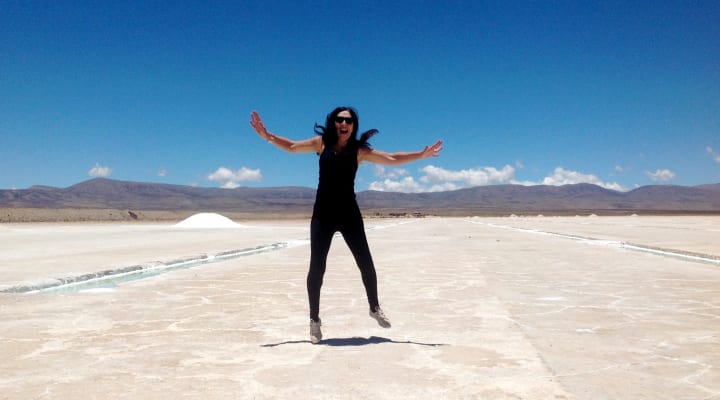
The Salinas Grandes is mined for precious minerals, as well as for the salt. This continues to cause problems for the local people due to the effect of the mining on water levels.
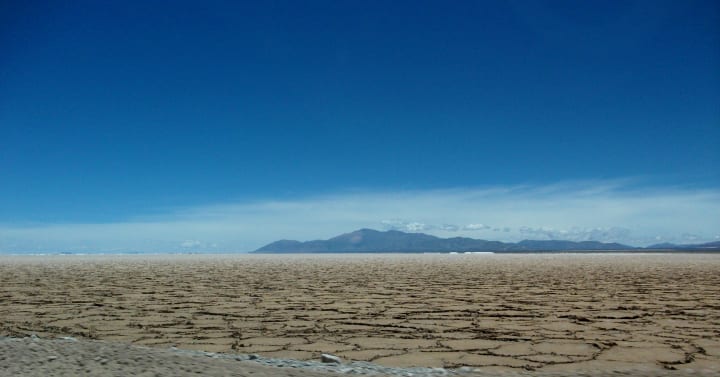
Going Home
Our flight back to Buenos Aires was from the city of Jujuy, capital of Jujuy province. We'd expected to find a gem like Salta City but Jujuy City was a long-faded glory. It's memorable for being the place we flew home from.
The north-west of Argentina is well-known to the Argentinians but less so to those from outside the country. It's a hidden gem with very few tourists and amazing natural and man-made sights. And tranquility.
Maybe we walked in the footsteps of Alejandra's ancestors. If not, we certainly got a flavour of Argentina's colonial and original past.
About the Creator
Alex Markham
Music, short fiction and travel, all with a touch of humour.




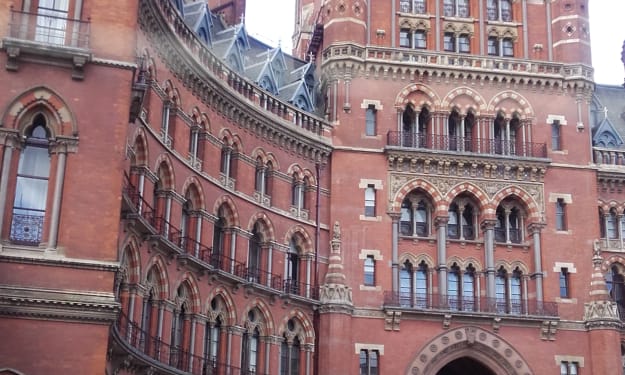

Comments
There are no comments for this story
Be the first to respond and start the conversation.